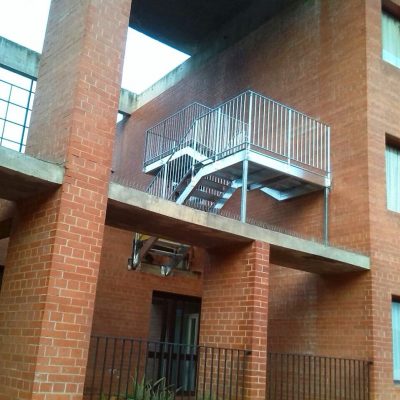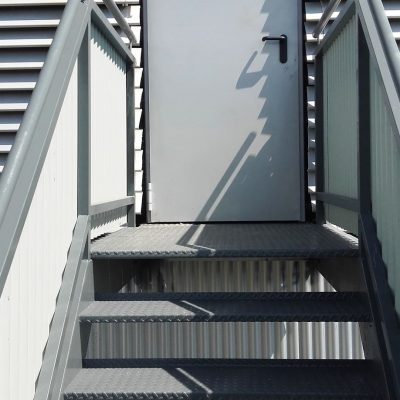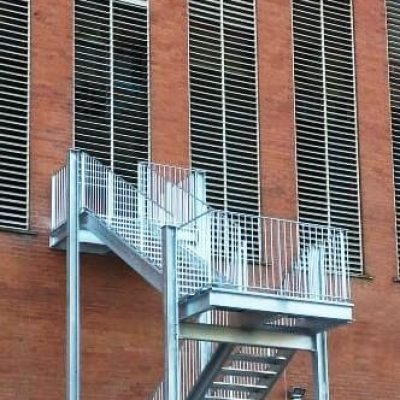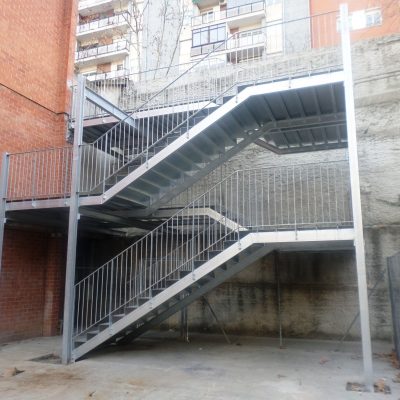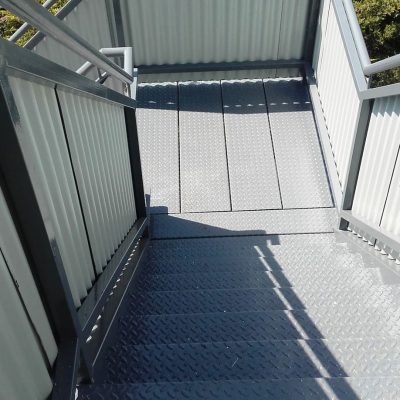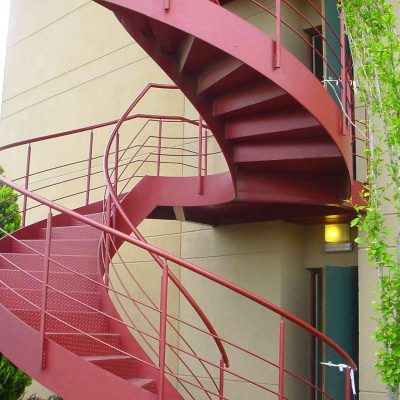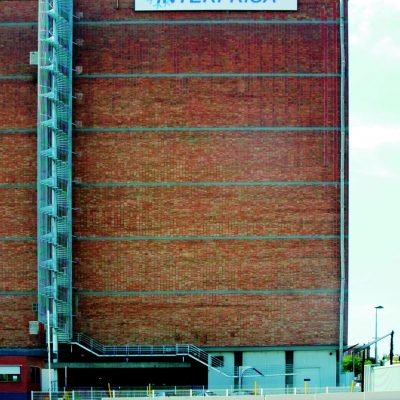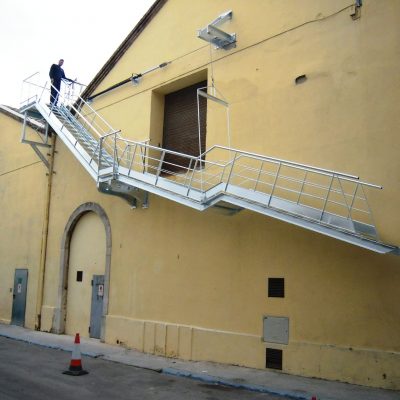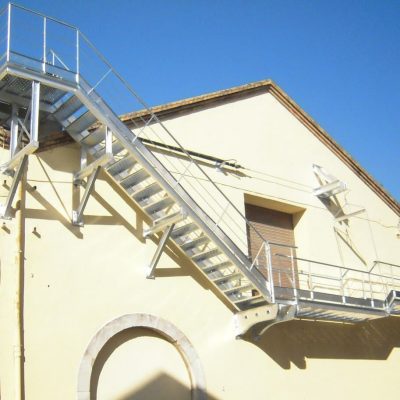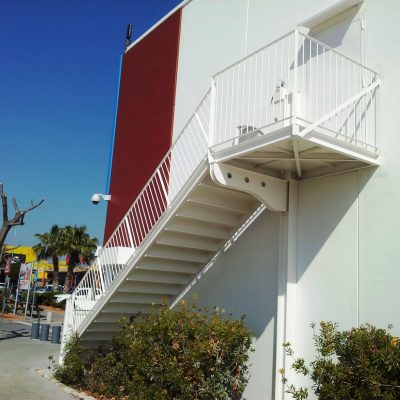Emergency Stairs
Balaguer Stairs
Emergency Stairs
Welcome to the Emergency Stairs page! Here you can see various options for stairs designed to guarantee safety and efficient evacuation in emergency situations.
Emergency stairs must be solid and durable structures, generally located on the outside of buildings. All emergency stairs must comply with regulations. These regulations vary by country and region, but typically include requirements related to design, construction, and accessibility. Here are some key aspects that are often addressed in regulations:
- Dimensions and Slope: Step dimensions and stair slope must meet specific standards to facilitate safe and rapid evacuation. Furthermore, the regulations may vary depending on the use that the building will have.
- Fire Resistant Materials: Iron. Materials used in the construction of stairs must be fire resistant to ensure structural integrity during a fire.
- Signage and Emergency Lighting: There must be clear and visible signage systems, as well as emergency lighting, to guide people to emergency exits.
- Accessibility: Emergency stairs must be accessible to people with disabilities, which may include the presence of ramps, elevators or alternative exits.
- Load Capacity: Ladders must have a sufficient load capacity to support the expected evacuation traffic, including people and, in some cases, rescue equipment.
- Location and Design: Stairs should be strategically located to allow quick access and should have a design that minimizes obstacles and reduces the possibility of congestion during evacuations.
- Regular Maintenance: Regular maintenance is required to ensure that stairs are in optimal condition at all times.


